Songwriting basics: how to create a heartbreaking, sad chord progression
Sprinkle a little magic, wonder and even soul into your chord progressions with this neat music theory device
Music is an incredibly powerful tap into the emotions. As an experiment, try watching the most emotional scene from any movie you can think of with the sound turned off.
Without music, the emotional impact of the scene will be hugely reduced. So when it comes to conveying raw emotion, such as soaring joy or devastating heartbreak, there are various tools composers can use in a soundtrack to heighten all of these emotions in the viewer.
The same sort of thing can be put to good use in your songwriting. If you’re starting out to write a sad song, the lyrical content is only the half of it. You’re also going to want to use a musical backdrop that reinforces the despair of an intense breakup, a forlorn memory of a long-lost love, or losing your keys down the back of the sofa. It’s OK, I know, it happens to all of us at some point; it’ll be OK, I promise.
Anyway, the point is, that to make a sad song properly sad, you need a properly sad chord progression, so we’ve sought out one or two of the saddest chords known to mankind. These – when combined with the saddest of all keys (according to Spinal Tap that is), D minor – will make anyone want to shed an empathetic tear.
OK, so maybe that’s a bit extreme, but you get the idea: if you’re going for a certain mood in your track, you need to know how best to create it, so read on as we equip you with a few tear-jerking tools.

Step 1: You’d think that for a sad chord progression, the majority of the chords would be minor, right? Well, not necessarily. With the right combination of chord shapes, major chords can play a surprisingly large part in creating some seriously sad stuff. Let’s illustrate this by starting with undeniably the happiest chord of all: C major (C, E, G).
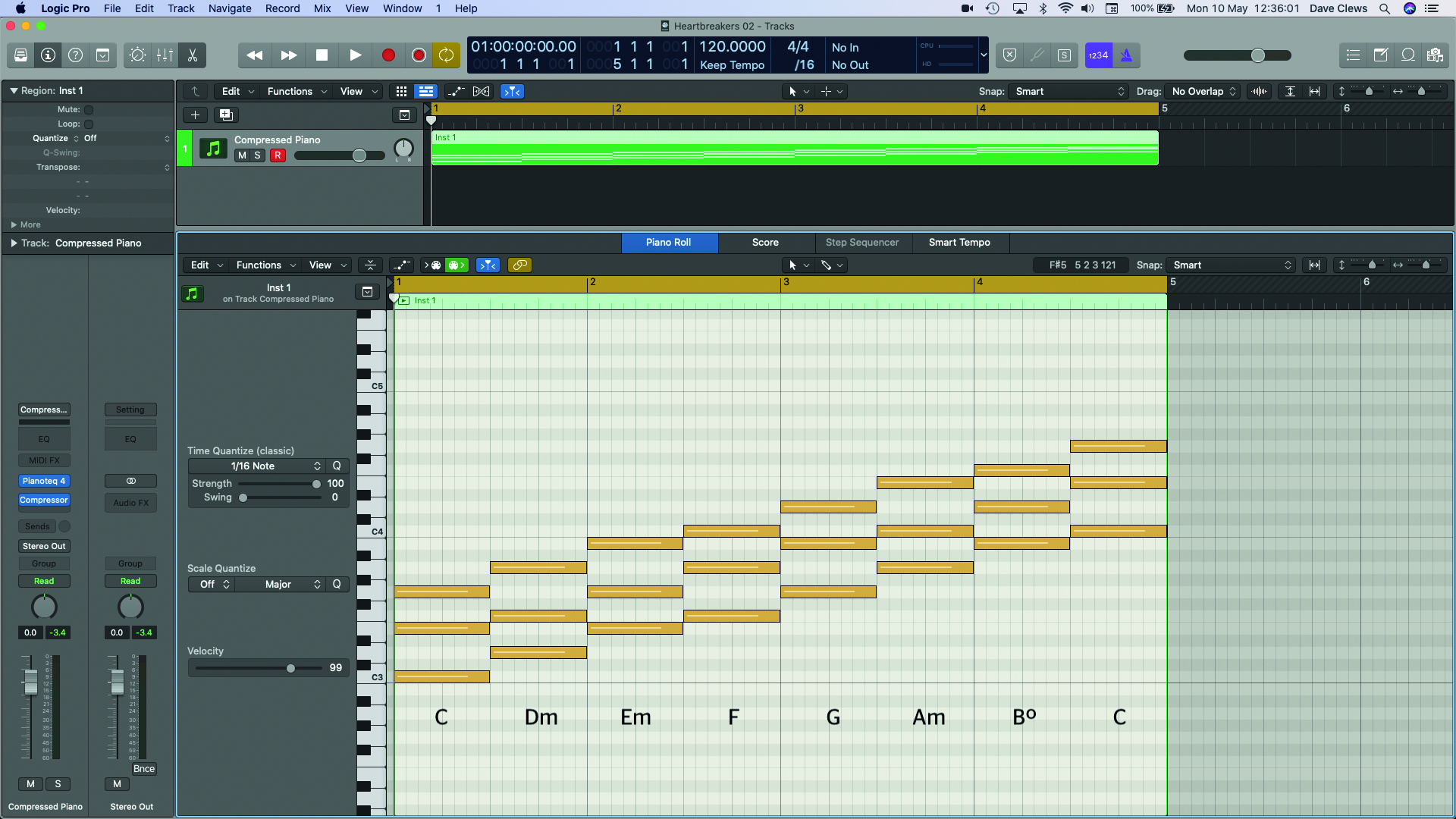
Step 2: We can have C major as our first chord and then add in one or two of the minor diatonic chords from the key of C major. Here’s the full set of diatonic triads, all laid out in order, built by stacking up alternate notes from the C major scale. It’s quite interesting to note that, out of the seven chords in the diatonic set, three are minor chords.
Want all the hottest music and gear news, reviews, deals, features and more, direct to your inbox? Sign up here.
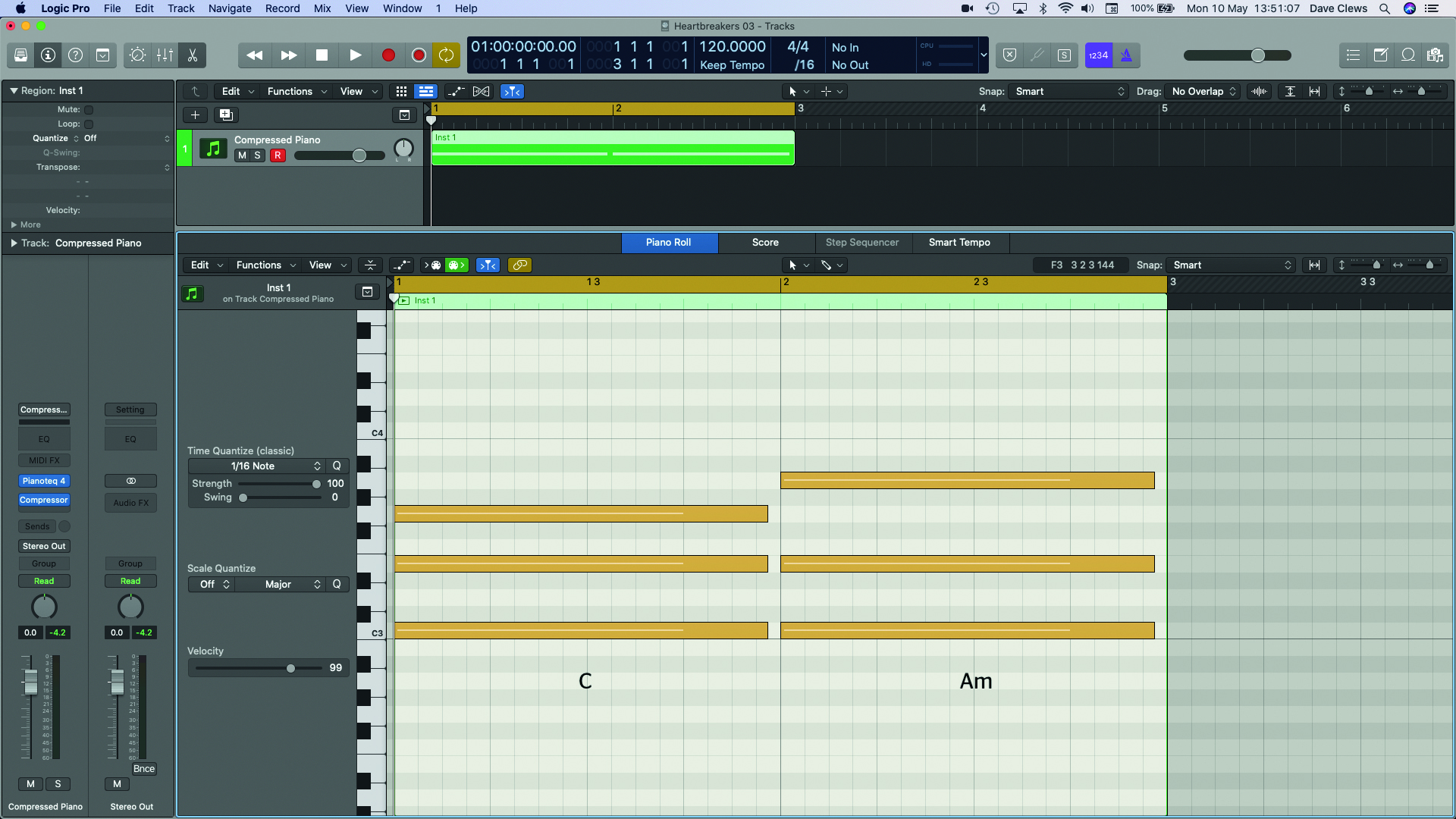
Step 3: So let’s tag one of these diatonic minor chords onto our major tonic chord to try and create a sad vibe. Let’s try C major to A minor. This is a conventional, diatonic move that occurs in millions of songs. There’s absolutely nothing wrong with it, but it’s not particularly sad – we can get a lot more heart-wrenching than this.
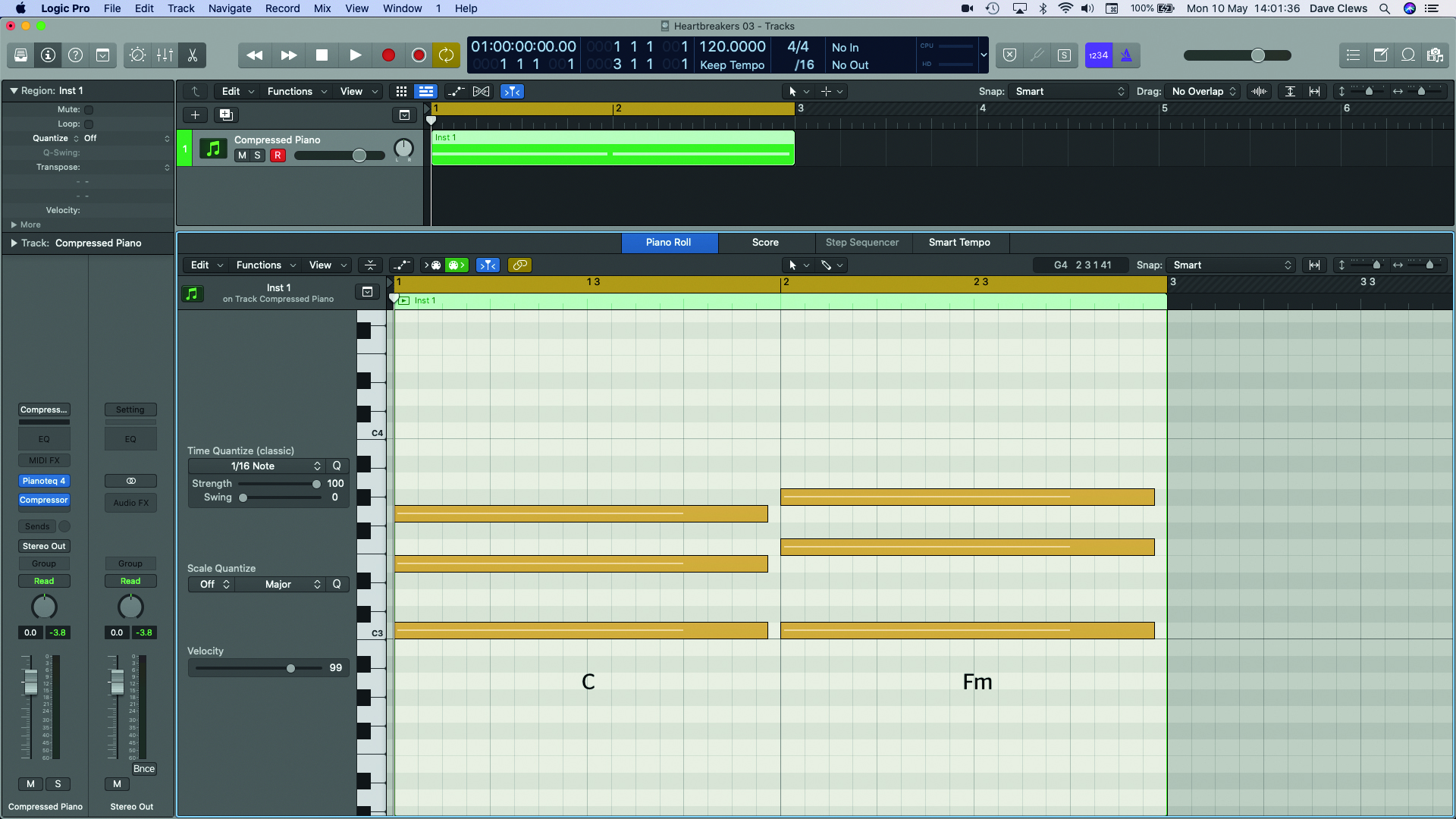
Step 4: Things often sound sadder if the listener is expecting ‘happy’. So try starting your progression with a major chord and then – wham! – hit them with a non-diatonic minor chord – one that’s not in the key, that they won’t have been expecting. For an idea of what this sounds like, try a major tonic chord – C major, for example – to the minor iv chord, Fm.
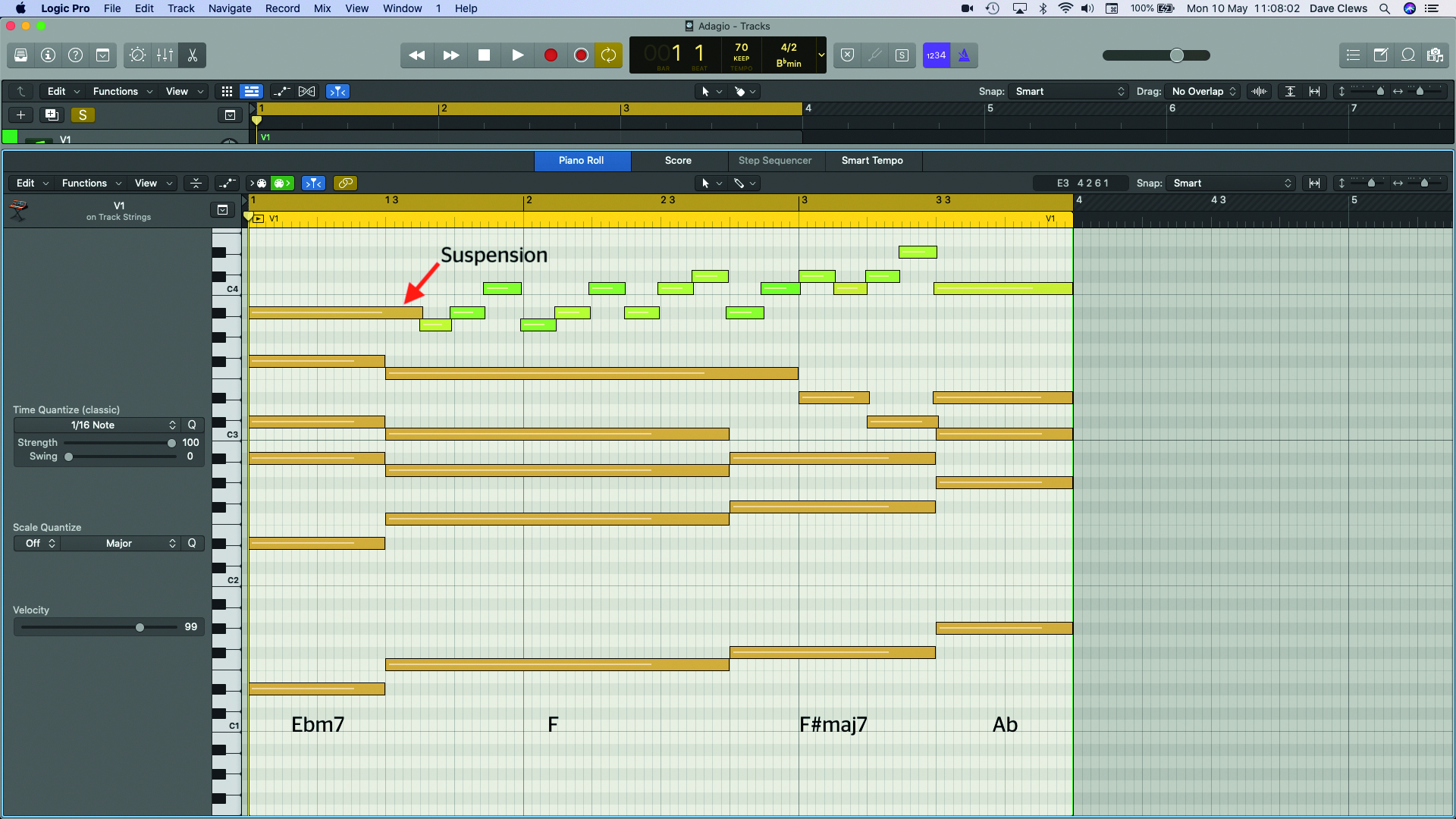
Step 5: Shifting between major/minor works in reverse too. Take the first chords of Samuel Barber’s Adagio for Strings, one of the most plaintive and haunting pieces ever written. We start on an Ebm7 chord with a high Bb melody note, which suspends over a shift to an underlying F major chord, before dropping a semitone to A: the major third of the F chord.

Step 6: There are two particular types of non-diatonic chord that make great tearjerkers, the first of which is the half-diminished, or minor-seven-flat-five (m7b5) chord. This is made by taking a regular minor seventh chord – I’m using a D minor 7 shape here (D, F, A, C) – and flattening the fifth by a semitone, making D, F, Ab,
C – Dm7b5.
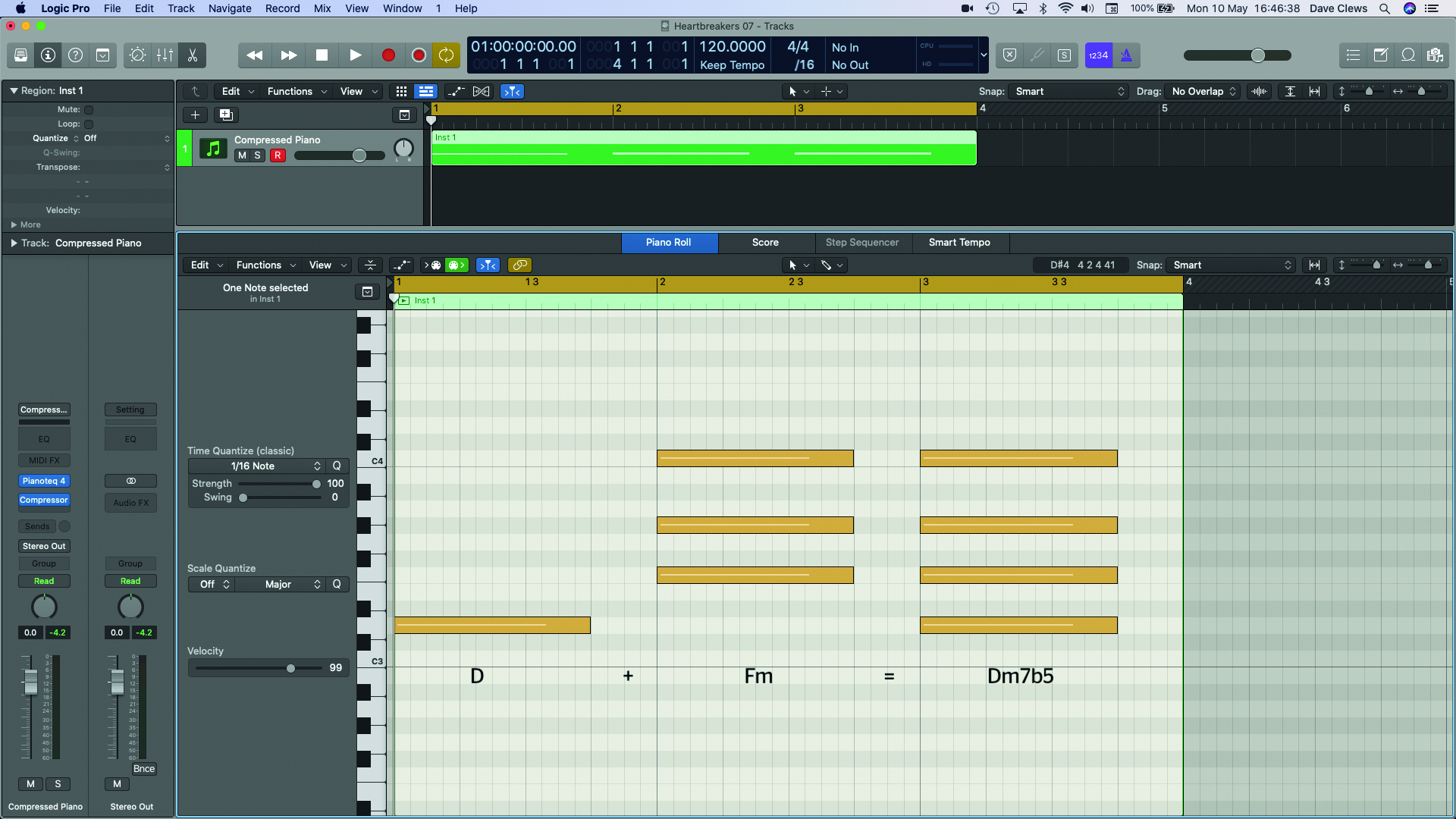
Step 7: The m7b5 chord has a particular type of yearning, heart-wrenching quality. A quick way to shape one is to play the root note of a minor triad, find its minor third and then build a minor triad off whatever note that third is. So to get a Dm7b5, play the root note of D, find the third of D minor – F – and play an F minor triad over the D root. Result – Dm7b5.

Step 8: The m7b5 is a great heartbreaker chord to add to a progression if that’s the emotion you’re trying to convey. Let’s try it in a major key, rooted off the minor ii chord. In the case of the key of C major, that makes it a Dm7b5 chord. Moving from C major to Dm7b5 is a similar move to our C > Fm change from step 4, but with a D in the bass under the Fm.
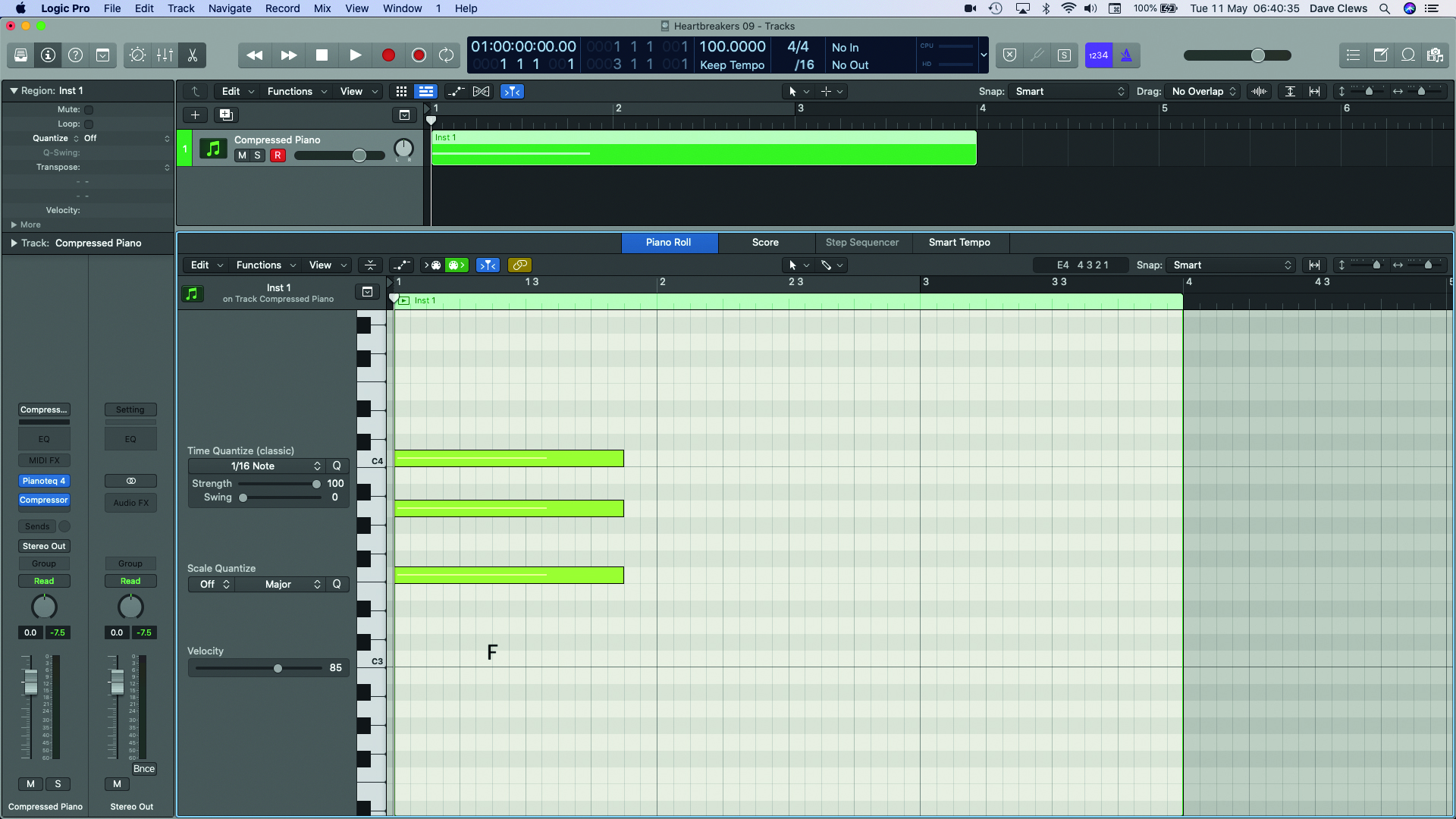
Step 9: Now let’s focus on our second non-diatonic chord shape – the # IVdim chord. This is an easy one to put together. Find the fourth degree of the major scale of the key we’re in and frame the diatonic IV major chord that uses it as its root. So in the key of C major, that would be an F major chord (F, A, C).
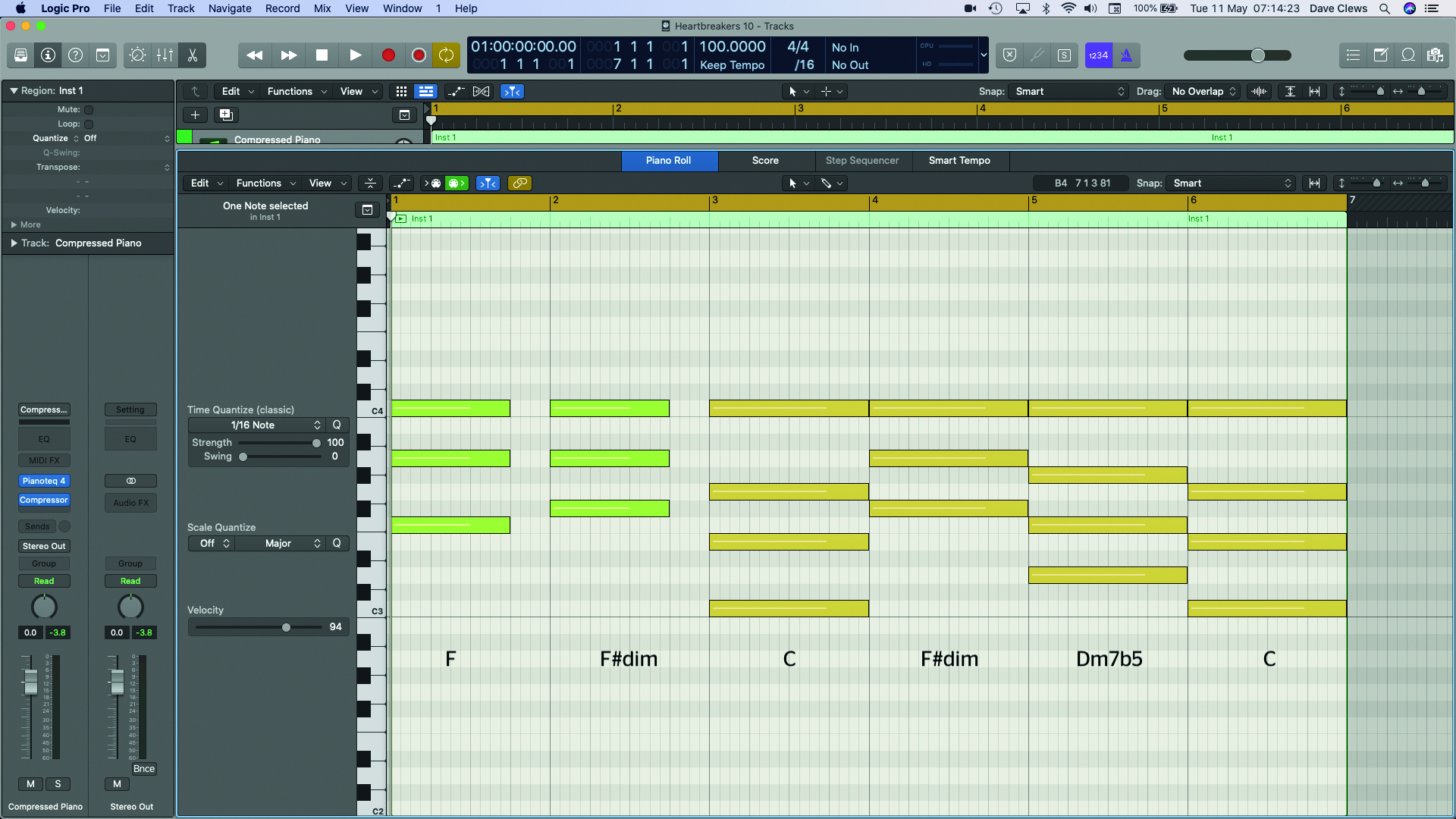
Step 10: To make our # IVdim chord, all we have to do is raise up the root note by a semitone, keeping the rest of the chord shape – the A and C notes – intact. This gives us F# dim (F# , A, C). Paired with our tonic C major chord, this brings a really wistful, longing character to our progression, which now takes the form C > F # dim > Dm7b5 > C.

Step 11: Here’s a minor key diatonic progression that, in Roman numeral form, is spelled i > VI > III > VII. In the key of D minor, that translates to Dm9 > Bb > F > C. Even though three out of these four are major chords, it has a faintly tragic, still contemporary vibe. Slipping in a dominant A7/C# passing chord back to the Dm helps make things even more miserable.
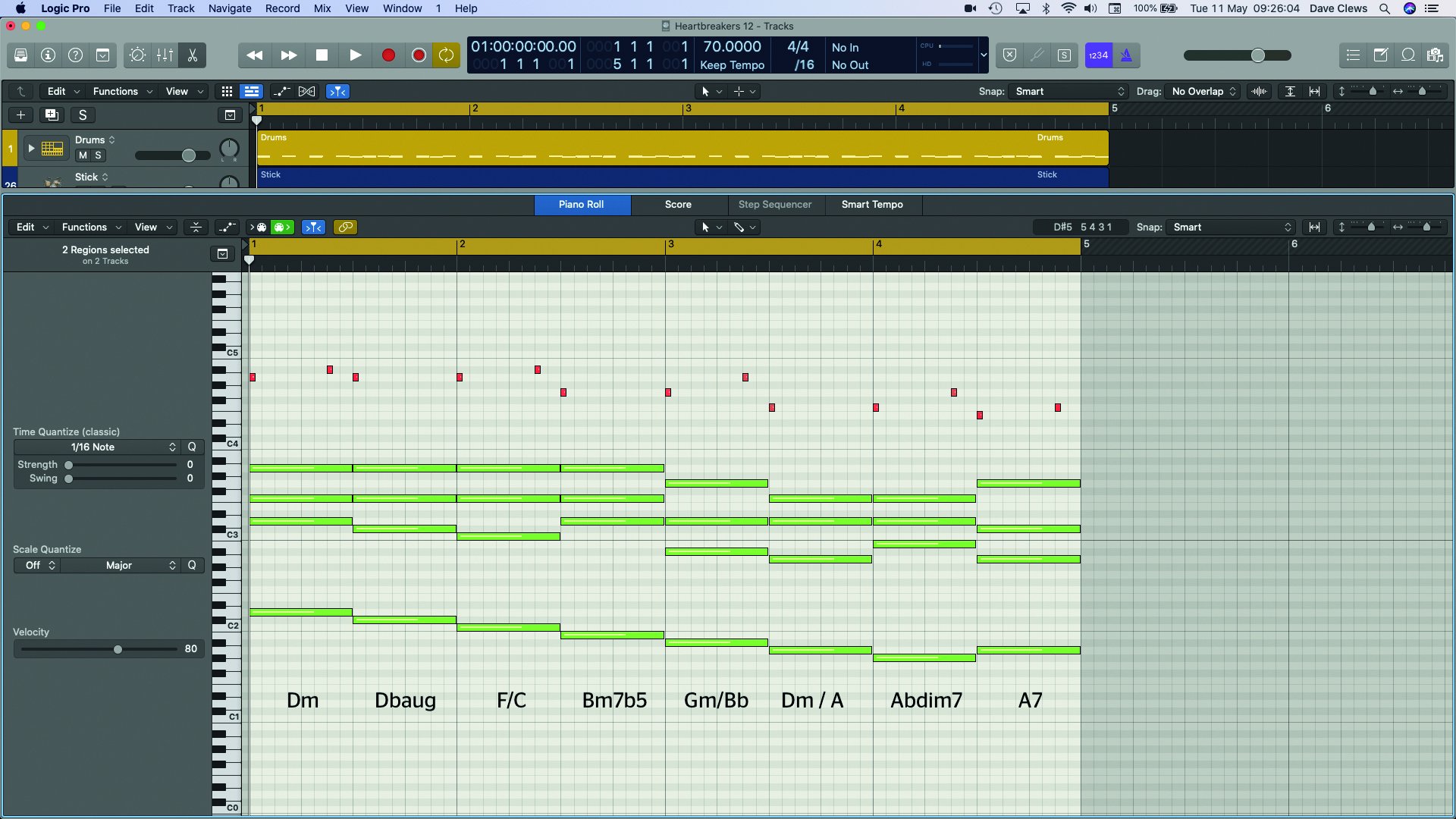
Step 12: Our final progression this month is also in the key of Dm, and features a chromatic, descending bassline that never fails to conjure up a melancholy feeling. We’ve got Dm > Dbaug > F/C > Bm7b5 > Gm/Bb > Dm / A > Abdim7 > A7. The chords are enhanced by a wistful superimposed bell melody (shown in red). Anyone got a tissue, (sniff)?
Pro tips
Getting emotional
Quite often, it’s not necessarily chords themselves that are sad, it’s more the movement between two particular types of chord that evokes the feeling of sadness. By using slightly more exotic, non-diatonic chords, we’re able to convey slightly different shades of emotion. Rather than just being straight-up happy or sad, we can use these to convey more subtle shades of sadness, like nostalgia or disappointment for instance. Try playing around with different combinations of major with minor, m7b5 and #ivdim chords to see what emotions you can magic up.
Computer Music magazine is the world’s best selling publication dedicated solely to making great music with your Mac or PC computer. Each issue it brings its lucky readers the best in cutting-edge tutorials, need-to-know, expert software reviews and even all the tools you actually need to make great music today, courtesy of our legendary CM Plugin Suite.
